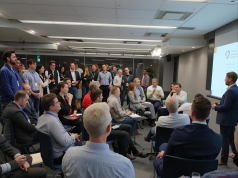In an era of rapid technological advancement and shifting economic landscapes, the job market presents a paradox that is as puzzling as it is critical to address. On one side, we have a booming gig economy, rising automation, and a global talent pool, while on the other, there persists a nagging talent shortage and pockets of stubborn unemployment. How can there be a lack of workers when there are still people looking for jobs? How can companies struggle to find talent when unemployment rates fluctuate? As experienced Veteran Employment Specialists, we recognize the need to uncover and implement contemporary recruitment strategies that tackle these very contradictions.
First, let’s examine the root causes of the paradox. Why, in a time when job openings are abundant, are they not being filled? Several factors contribute to this disparity. There’s a skills mismatch between the available jobs and the skill sets of the job seekers, geographical mismatches, and often, a lag in adopting new recruitment methodologies that cater to the modern worker. The advent of sophisticated skill matching technologies and virtual recruitment tools is revolutionizing the hiring process, allowing companies to tap into a broader talent pool and providing opportunities for remote work.
Diversity and inclusion initiatives are more than just corporate buzzwords; they are practical strategies for expanding the talent pool. By actively seeking candidates from various backgrounds, companies can uncover untapped talent and foster a more innovative and dynamic work environment. This leads to a workforce that’s not only more representative of the society it serves but also more capable of thinking outside the proverbial box.
Continuous employee development is another cornerstone of solving the talent conundrum. In an age where learning and development opportunities are highly valued by employees, companies that invest in their workforce’s growth can expect higher retention rates and a more skilled and adaptable team. This focus on professional development also positions a company as an employer of choice, attracting top talent seeking to advance their careers.
Moreover, the flexibility of remote work cannot be underestimated. This modern work arrangement widens the net for recruitment, allowing companies to hire the best person for the job, regardless of their location. Remote work also offers a life-work balance that is increasingly demanded by today’s workforce, leading to happier and more productive employees.
Leading companies across various industries have started to recognize and implement these strategies. Their successes are not just anecdotal but are supported by compelling data and research. These case studies serve as blueprints for other businesses aspiring to overcome the talent shortage while simultaneously addressing unemployment.
Our discussion weaves through expert opinions and current statistics to showcase the need for a more adaptable and inclusive recruitment framework. These elements combine to form a holistic approach to modern recruitment, one that not only fills open positions but also contributes to a sustainable and thriving workforce. As the world of work continues to evolve, the companies that can effectively bridge the gap between talent shortages and unemployment will be the ones that succeed and lead in their respective fields. For our readership, which mirrors the discerning audience of the Washington Post, The New Yorker, and The 威而鋼
New York Times, these insights are not just beneficial; they are essential for future-proofing their workforce in an ever-changing world.




























